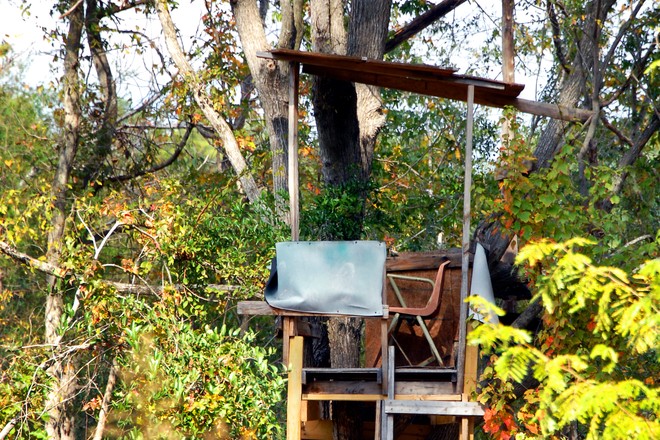Advertisement
When you’re bowhunting for whitetails, the wind can be your best friend—or your worst enemy. And yet I know many bowhunters who routinely hunt one or two treestands all season long without giving much thought to wind direction and speed, gusts or how the lay of the land can alter the wind. The importance of understanding wind cannot be emphasized enough, however, especially when it comes to staying downwind of wary bucks.
Learning how to read the wind often takes time, as well as trial and error, especially in hilly or steep terrain. But once you figure out how it determines where you should place your treestands—and when you should or shouldn’t hunt—you’ll start seeing more and bigger deer. Let’s break it down.
Advertisement
On the flats
Flatlands usually mean farmland, of which Canada has plenty. When it comes to wind, this is the easiest type of topography to read, as the wind generally blows in a consistent direction. At the same time, there are various factors that can influence the wind’s course, including different types of trees. A stand of spruce or pine, for example, will usually deflect a quartering wind, as will early-season deciduous trees in full leaf. However, the same wind will usually blow straight and true once the leaves drop.
Another factor that often comes into play on flatlands is wind drift, which is a steady but nearly imperceptible crosswind. Even when conditions are calm—such as during early mornings and late evenings—there will be a wind drift, which mature deer use to their advantage to sniff out predators. And though wind drift generally stays true, it can change with the slightest morning breeze, so you must always monitor it (see “Direction detection” below).
Advertisement
In the woods
I spend most of my bowhunting time in the big woods, where the wind is at its trickiest. And with access to thousands of acres of crown land, I continue to learn about the nuances of wind. Through this learning process, I’ve developed a few rules when it comes to bowhunting and the wind.
Rule number one is to always hunt the high ground. This usually means ridge tops or high-ground flats where a steady wind can travel for some distance before coming into contact with a terrain feature and changing direction.
Second, if you can’t hunt high ground, never hunt low ground that’s surrounded by high ground. This can be a tough rule to follow, as these areas often have a ton of deer sign. Swirling winds are the norm in this type of terrain, however, meaning you’ll be busted every time. The best lowland hunting spots are flats, such as marshes and beaver ponds; the downwind side generally has a steady wind direction.
Next, when hunting trails on the side of a hill in a relatively calm wind, always mind the thermals. As the evening air cools and sinks, it will carry your scent down the hill away from your position. So obviously, you need to set up downwind of any trail you’re hunting.
And my final rule? Stay out of the big woods when winds are gusting, and hunt the most open terrain possible. Strong gusts wreak havoc with wind direction—it’s not uncommon for the wind to hit all points of the compass every few minutes under such conditions. I don’t know how many treestands I’ve hung over the years and realized within an hour that the set-up was impossible to hunt due to swirling winds. As a bowhunter, you need every advantage you can get—don’t let the wind take any of it away from you.nd. This usually means ridge tops or high-ground flats where a steady wind can travel for some distance before coming into contact with a terrain feature and changing direction.
Second, if you can’t hunt high ground, never hunt low ground that’s surrounded by high ground. This can be a tough rule to follow, as these areas often have a ton of deer sign. Swirling winds are the norm in this type of terrain, however, meaning you’ll be busted every time. The best lowland hunting spots are flats, such as marshes and beaver ponds; the downwind side generally has a steady wind direction.
Next, when hunting trails on the side of a hill in a relatively calm wind, always mind the thermals. As the evening air cools and sinks, it will carry your scent down the hill away from your position. So obviously, you need to set up downwind of any trail you’re hunting.
And my final rule? Stay out of the big woods when winds are gusting, and hunt the most open terrain possible. Strong gusts wreak havoc with wind direction—it’s not uncommon for the wind to hit all points of the compass every few minutes under such conditions. I don’t know how many treestands I’ve hung over the years and realized within an hour that the set-up was impossible to hunt due to swirling winds. As a bowhunter, you need every advantage you can get—don’t let the wind take any of it away from you.
Direction detection
Commercial products such as squeeze-bottle powder applicators can be used to help determine wind direction and patterns, but I simply use milkweed puffs when I’m on the stand. When you let one go from 20 feet up in a tree, you can really see how the wind drifts. And before I head out, I monitor the hourly wind direction reports for the area I’m hunting. If a change in wind direction is forecast, I make note of the time.

